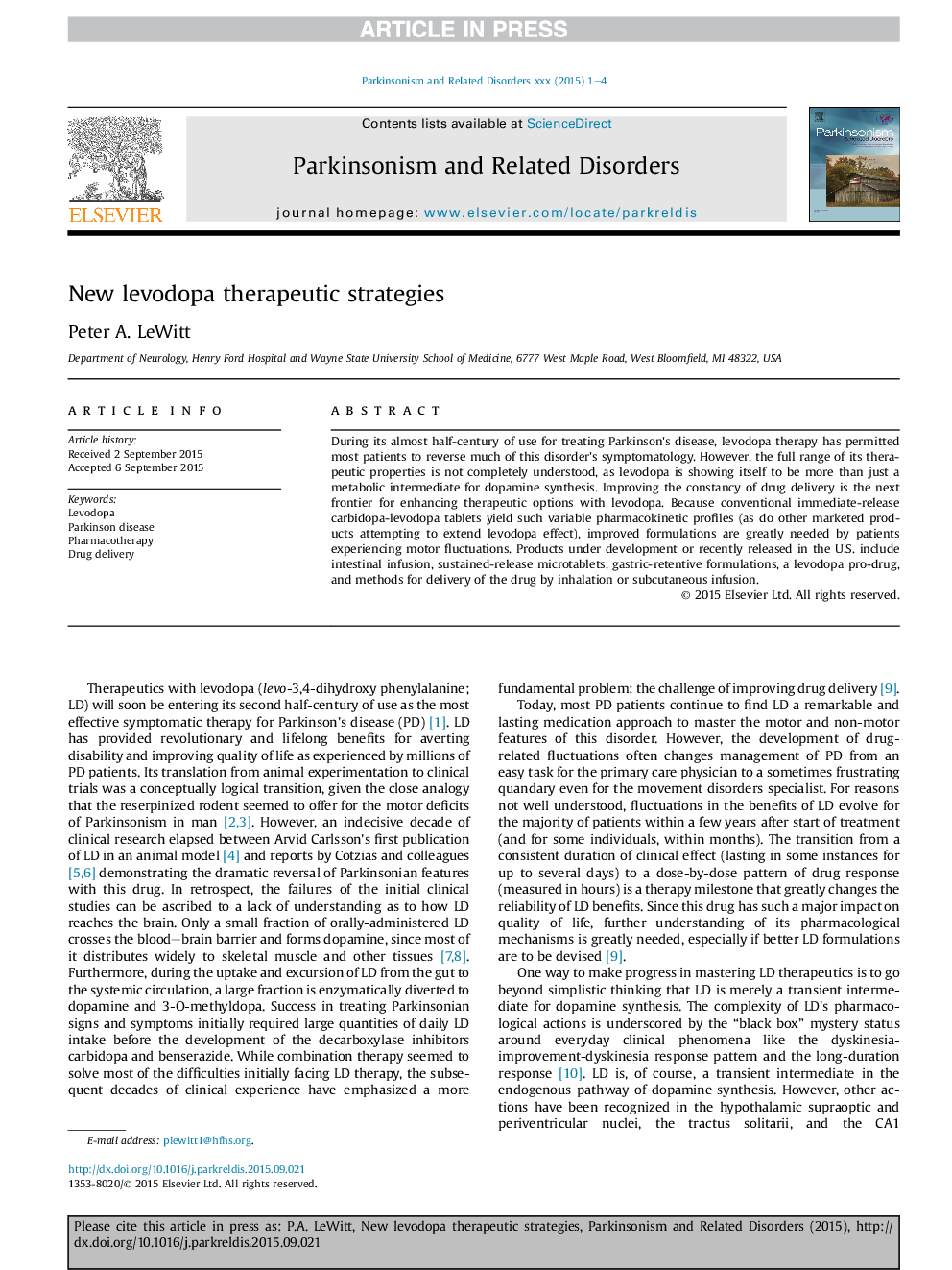| Article ID | Journal | Published Year | Pages | File Type |
|---|---|---|---|---|
| 10745082 | Parkinsonism & Related Disorders | 2016 | 4 Pages |
Abstract
During its almost half-century of use for treating Parkinson's disease, levodopa therapy has permitted most patients to reverse much of this disorder's symptomatology. However, the full range of its therapeutic properties is not completely understood, as levodopa is showing itself to be more than just a metabolic intermediate for dopamine synthesis. Improving the constancy of drug delivery is the next frontier for enhancing therapeutic options with levodopa. Because conventional immediate-release carbidopa-levodopa tablets yield such variable pharmacokinetic profiles (as do other marketed products attempting to extend levodopa effect), improved formulations are greatly needed by patients experiencing motor fluctuations. Products under development or recently released in the U.S. include intestinal infusion, sustained-release microtablets, gastric-retentive formulations, a levodopa pro-drug, and methods for delivery of the drug by inhalation or subcutaneous infusion.
Related Topics
Life Sciences
Biochemistry, Genetics and Molecular Biology
Ageing
Authors
Peter A. LeWitt,
